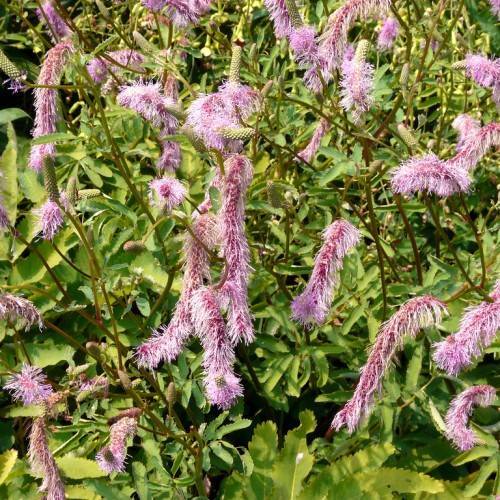
bottlebrush
Sanguisorba obtusa
Cycle:
Herbaceous Perennial
Watering:
Minimum
Hardiness Zone:
7
Flowers:
Flowers In Summer
Sun:
Full sun, Part sun/part shade
Fruits:
Fruits In Autumn Ready In Summer
Leaf:
Yes
Growth Rate:
High
Salt Tolerant:
Yes
Care Level:
Medium
watering
Baby sage should be watered every 7-10 days or when the top inch of soil appears dry. Water thoroughly, allowing the soil to become completely saturated. Allow the excess moisture to drain away, then discard the draining water. During the hotter months, baby sage may need watering more frequently once every 5-7 days.
sunlight
Baby Sage thrives in sunny areas, with at least 6-8 hours of direct sunlight per day for optimal growth. It can tolerate some shade, but too much shade will cause the plant to become weak and leggy. A south- or west-facing location with full or partial sun exposure is ideal. During the hot summer months, it’s best to provide some protection from the midday sun in order to prevent scorching or sunburn. In cooler climates, the plant may need more sunlight and might benefit from morning sun and afternoon shade.
pruning
Baby sage should be pruned in late spring or early summer, once it has finished flowering. It should be lightly pruned - only removing spent flowers and dead or damaged branches or stems. This annual pruning should be done to maintain the shape and compact size of the shrub. If you feel like your baby sage isn’t growing as well as it could be, you can wait until the following year and prune it a bit more vigorously, removing a few branches and stems from the center of the shrub to allow for new growth.
